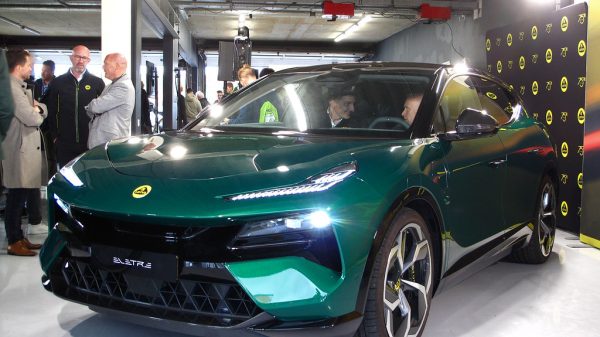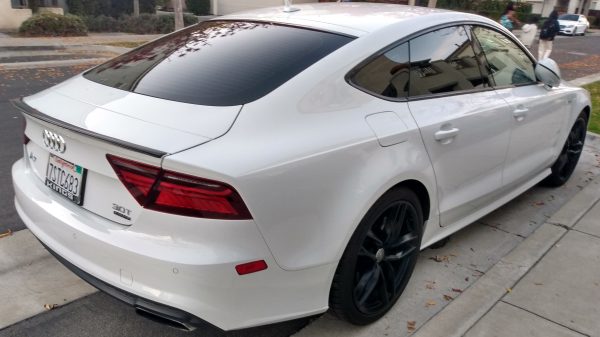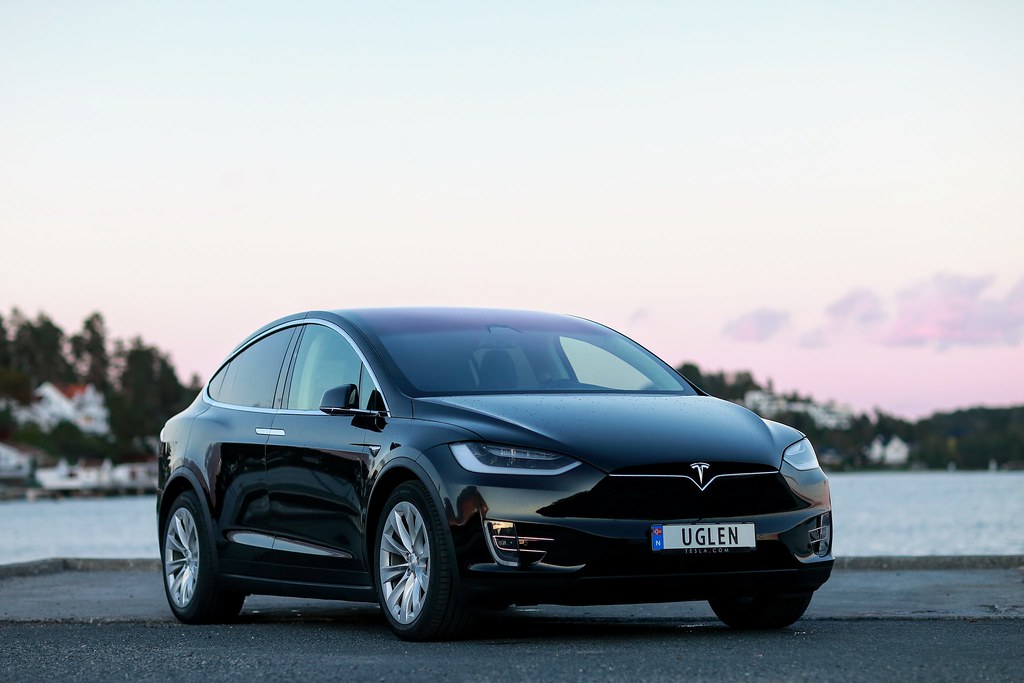Autonomous driving technology has come a long way, but many people still wonder how smart today’s electric vehicles really are. AI-powered systems in 2024’s EVs can now handle complex driving tasks and make split-second decisions.
The Evolution of AI in Autonomous Driving
The journey of AI in autonomous driving began with DARPA challenges in the early 2000s. These competitions sparked innovation, pushing engineers and researchers to develop smarter, more capable self-driving systems.
As technology advanced, major players like Google and Tesla entered the arena in the 2010s, integrating sophisticated AI algorithms into their vehicles.
Avoid the long lines and shop online!
-> Shop the Best Deals on Amazon <-
As an Amazon Associate, we earn from qualifying purchases.
AI quickly became the backbone of autonomous driving tech. It processes vast amounts of sensor data, enabling vehicles to perceive their environment, make split-second decisions, and control their movements.
The last decade saw a surge in self-driving car deployment, with companies like Tesla rolling out commercial autonomous services. This rapid progress led to the development of Operational Design Domains (ODDs) – specific conditions under which self-driving systems can operate safely.
ODDs have evolved across various vehicle types and geographical locations, expanding the capabilities of autonomous vehicles.
The automotive industry has embraced a wide range of AI algorithms to power self-driving systems. Machine learning models analyze road conditions, predict other drivers’ behaviors, and optimize route planning.
Computer vision algorithms interpret camera feeds, identifying obstacles and road signs. Natural language processing enables voice assistants, enhancing the user experience. As AI continues to advance, we’re seeing breakthroughs in areas like edge computing and digital twins, further improving the performance and safety of autonomous vehicles.
Key Features of 2024’s Smart EVs
2024’s smart EVs pack a punch with cutting-edge features. Xpeng Motors leads the charge, showcasing flagship models at the Beijing Auto Show 2024. These vehicles boast the industry’s first mass-produced 2K pure visual neural network large model, revolutionizing on-road perception and decision-making.
Avoid the long lines and shop online!
-> Shop the Best Deals on Amazon <-
As an Amazon Associate, we earn from qualifying purchases.
This AI-powered system enhances safety and navigation, working alongside advanced driver assistance systems (ADAS) like automatic emergency braking and adaptive cruise control.
Charging capabilities see a massive leap forward in 2024’s smart EVs. Xpeng plans to roll out 800kW ultra-fast charging facilities in Q3, slashing downtime between trips. AI Valet Driver technology is set to debut after upgrades in visual perception and control capabilities, offering hands-free parking and retrieval.
For the adventurous, Xpeng AeroHT’s low-altitude manned flying car hits pre-sales in Q4, blurring the lines between road and sky travel. These innovations, coupled with Xpeng’s strategic partnership with Volkswagen Group on EEA development, signal a new era in electric vehicle technology and autonomous driving.
Avoid the long lines and shop online!
-> Shop the Best Deals on Amazon <-
As an Amazon Associate, we earn from qualifying purchases.
Role of Machine Learning in Navigation and Safety
Machine learning has revolutionized navigation and safety in autonomous vehicles. AI algorithms process vast amounts of data from sensors, cameras, and radars to make split-second decisions.
These systems can detect obstacles, predict pedestrian movements, and adjust routes in real-time – often faster and more accurately than human drivers.
Advanced Driver Assistance Systems (ADAS) rely heavily on machine learning for features like adaptive cruise control and automatic emergency braking. Computer vision algorithms interpret camera feeds to recognize road signs, lane markings, and potential hazards.
Meanwhile, anomaly detection systems monitor vehicle components to predict and prevent mechanical failures before they occur.
LiDAR sensors work in tandem with AI to create detailed 3D maps of a vehicle’s surroundings. This allows for precise navigation even in challenging conditions like heavy traffic or poor weather.
As these technologies continue to advance, autonomous vehicles are becoming increasingly capable of handling complex driving scenarios safely and efficiently.
Breakthroughs in AI-Driven Autonomy
AI-driven autonomy has made significant strides in 2024’s electric vehicles (EVs). Xpeng, a leading EV manufacturer, has pushed the boundaries with its XNGP ADAS, which uses end-to-end large models for advanced driver assistance.
This system integrates AI technology into both smart cockpit and smart driving features, as seen in the XOS 5.1.0 update. The upgrade has enhanced SR perception capabilities, extending the range to an impressive 1.8 standard soccer fields – a major leap in autonomous vehicle sensing technology.
These advancements aren’t limited to perception alone. Xpeng’s commitment to upgrading its perception and planning/control large models in vehicles marks a shift towards more sophisticated AI-enabled driving experiences.
This progress aligns with the industry’s push towards higher levels of autonomy, as defined by the Society of Automotive Engineers’ six-level scale. While full Level 5 autonomy remains a future goal, these breakthroughs are bringing us closer to widespread Level 3 autonomous driving, where vehicles can handle most driving tasks but still require human intervention in certain situations.
Testing of these AI-powered systems has gone global, with Xpeng completing Highway NGP testing in Germany. This international expansion of testing grounds is crucial for developing robust autonomous driving technologies that can adapt to various road conditions and driving cultures.
As AI continues to evolve, we can expect even more sophisticated features in future EVs, potentially revolutionizing traffic management, energy efficiency, and overall driving safety.
Challenges Faced by AI-Powered Autonomous Vehicles
AI-powered autonomous vehicles face a myriad of obstacles on their journey to widespread adoption. Safety concerns top the list, as these vehicles must navigate complex road conditions, unpredictable traffic patterns, and ever-changing weather.
Ethical dilemmas also loom large – how should a self-driving car prioritize lives in potential accident scenarios? Regulatory frameworks struggle to keep pace with rapid technological advancements, creating uncertainty for manufacturers and consumers alike.
Data security and privacy issues raise red flags, as these vehicles collect and process vast amounts of sensitive information.
Public trust and acceptance remain significant hurdles for AI-driven cars. Many people feel uneasy about relinquishing control to a machine, especially in high-stakes driving situations.
Edge cases – rare but potentially dangerous scenarios – pose a constant challenge for AI systems. These might include unusual road markings, temporary construction zones, or unexpected objects on the road.
Collaborative efforts between automakers, tech companies, and regulators are crucial to addressing these concerns. As the industry pushes forward, it must balance innovation with rigorous safety standards and transparent communication to build confidence in this transformative technology.
Industry Leaders in AI-Powered EVs
In the competitive landscape of AI-powered electric vehicles, Xpeng Motors has emerged as a formidable player. At the Beijing Auto Show 2024, Xpeng showcased its cutting-edge lineup of Smart EVs, demonstrating its commitment to pushing the boundaries of automotive technology.
The company’s flagship models leverage end-to-end large models for their XNGP Advanced Driver-Assistance Systems, setting a new standard in the industry.
Xpeng’s innovation extends beyond hardware to software, with the introduction of XOS 5.1.0 – the first operating system in the automotive sector to fully integrate AI technology into both smart cockpit and driving functions.
This breakthrough paves the way for enhanced user experiences and safer driving conditions. The company’s ambitious plans include rolling out AI Valet Driver, a feature that promises to revolutionize parking and vehicle retrieval.
Xpeng’s forward-thinking approach has caught the attention of industry giants, leading to a strategic cooperation framework agreement on the Electric Electronic Architecture with Volkswagen Group.
Tesla, another trailblazer in the EV space, continues to refine its Full Self-Driving capabilities, while Mercedes-Benz enhances its User Experience with AI-driven features. Toyota and Nvidia collaborate on developing advanced autonomous systems, combining their expertise in automotive manufacturing and AI chip design.
These industry leaders are not just competing – they’re collectively advancing the field of AI-powered EVs, bringing us closer to a future where autonomous driving is the norm rather than the exception.
Future Trends in AI and Autonomous Driving
AI in autonomous driving is racing ahead at breakneck speed. Machine learning algorithms are getting smarter by the day, crunching massive amounts of data to improve decision-making and safety.
We’re seeing rapid advancements in computer vision, allowing cars to better understand their surroundings. Natural language processing is enabling more seamless voice controls and interactions.
These AI breakthroughs are paving the way for truly driverless vehicles in the coming years.
Expect to see AI playing a bigger role in personalizing the in-car experience. Smart systems will learn drivers’ preferences and habits, automatically adjusting settings like temperature, music, and even driving style.
AI assistants will become more conversational and helpful, acting as knowledgeable co-pilots. On the technical side, AI will continue optimizing EV performance – from battery management to energy-efficient routing.
It’ll also enable more advanced vehicle-to-everything (V2X) communication, allowing cars to share data with infrastructure and other vehicles.
Cybersecurity and ethical AI will be key focus areas as autonomous systems become more complex. Carmakers will need robust safeguards against hacking and data breaches. There are also thorny questions around AI decision-making in potential accident scenarios.
Expect ongoing debates and evolving regulations in this space. Despite challenges, the trajectory is clear – AI will be the driving force behind safer, smarter, and more sustainable transportation in the years ahead.






























